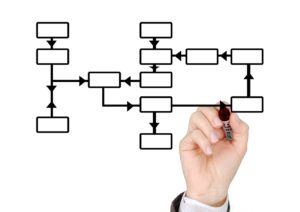Every seller knows how powerful a great email can be. You craft the perfect subject line, leverage content that your target persona relates to and catch their attention enough for them to want more. Having a cold email turn into a hot prospect is something every seller wants to happen more often. But sometimes there’s a build up to the email that catches their attention.
You’re not always going to find success after your first email. Or even your second or third. This is why email cadencing has become very important. Without it, you run the risk of never getting to the message that cracks through and lands you a meeting with a prospect. So, what goes into these efforts? Keep reading to find out about email cadences, email cadence templates, examples of both and more.
What is an Email Cadence?
An email cadence is essentially how your emails in a campaign are scheduled. When running an email campaign, you must decide a few things. How many emails will be included? How often are you going to send them? When do you want to include specific content? All these questions are answered by the email cadence. This determines which templates are sent and when, to allow your entire team to have consistent repeatable strategies in your outbound emailing efforts.
Example Email Cadence Templates
In our experience, the best email cadence templates come from your own data. Meaning, we believe that looking back at the health and success of past email cadences, combined with some best emailing practices can help lead your team to success. First, let’s look into some of the best email practices from this HubSpot article.
The article shows a few things, such as Monday has the best open rates in emails, Tuesday and Wednesdays have the highest click-to-open rates and weekend days are the worst performing open and click-to-open rates. So, considering this, it would be important to remember to send emails in your cadences earlier in the week, regardless of how spaced out they are.
Now that you know what day to send emails, you could look back at prior campaigns to see how many emails work best. By using your sales engagement solution, or similar tool, you should have access to see the success of past email cadences. So, if you ran one with 8 emails and saw a significant decrease in response rates after the 6th email and another cadence with only 5 emails that had great health, you could infer that only 5 or 6 emails is the right way to go.

Here’s an example cadence that we have used in the past. This is based on some best practices that have worked for us in similar campaigns; however, every situation is unique. Be sure to adjust your campaigns to what will work best for your needs:
- Day 1 - Intro Email
- Day 4 - Email showing knowledge of their problem
- Day 11 - Email showing benefit of our product
- Day 18 - Email showing a product feature
- Day 21 - Break up email
Remember, the best way to develop email cadence templates is to base it on what’s working now and what has worked in the past. Always being open to tweaking your efforts and cadences can help you adapt your efforts to reach higher and higher success.
Email Cadence Best Practices
While the number of emails and time between them may change depending on your target personas, reason for the campaign, or any other number of reasons, there are a few things to remember that stay consistent throughout all email cadences. Some of these are listed below:
- Always have a CTA
- Simple low friction CTAs work best
- For example - “Worth a chat”, “Is this a topic of interest?”, etc.
- Don't offer your calendar link or ask for specific dates/times the recipient is available in the first email
- Keep emails brief
- Use 50 words or less
- It should take 10 seconds or less to read the email
- 3rd grade language is best as anything more complex will get people to lose attention
- Personalize when you can
- Pay attention to the subject line
- Should ideally be 2-3 words, but no more than 4
- Use a capitalized letter for the first word and avoid jargon like “deal”, “low price” and other terms that can result in being flagged as SPAM.
These are a few things that are important regardless of the length of the email cadence. It’s important to have a CTA to encourage the email recipient to follow up and connect with you. Keeping emails brief helps with scannability and may help it get read over an email that contains way too much useless information. Personalizing emails can help the recipient think you took lots of time to learn more about them to help establish a meaningful connection. Finally, the subject line is what will get your email opened or sent to the trash, so you must ensure you take time to carefully craft one that will peak people’s interest.
B2B Sales Email Templates
A common type of email in cadences for sellers is a B2B sales email template. Here’s an example of one of these B2B sales emails:
Subject Line: Hitting your goal?
Body: Hi [name],
I checked out what [recipient's company name] does and it seems to me like [goal] may apply to you.
Knowing others in your position, I think we may be able to help.
[Quick review of how you can help]
Have some time in the next few days to talk?
Messaging along this line helps show personalization, gives a CTA, has a subject line that may pique interest and is brief and scannable. By highlighting your knowledge about the prospect’s goals, industry, or use case you can help establish that you’re educated in being able to help them.
Check out more useful email templates here!

How Do You Measure Email Cadences?
This was alluded to earlier in the blog, but there are ways to help measure email cadences. We recommend using Salesvue. By using Salesvue in your emailing efforts, you will have insight into how to help improve your email cadences in the future. Salesvue, a Salesforce-native sales engagement platform, can help show how specific emails did at specific steps in a cadence. This can help show which email templates are working, what times of day or days of the week are working, or even what step in the cadence presents a drop off in success. Take this information and continuously improve your efforts moving forward.
Summary
Email cadences are not rocket science. Once you have the main points of an email established, it’s all about trying out different things. Use the tools in your tech stack to help perfect your efforts. Then, take your email cadence templates and implement them across your whole team, giving every seller the boost they need.
Category
Tags
Subscribe to Funnel Vision
Get the latest and greatest right in your inbox






